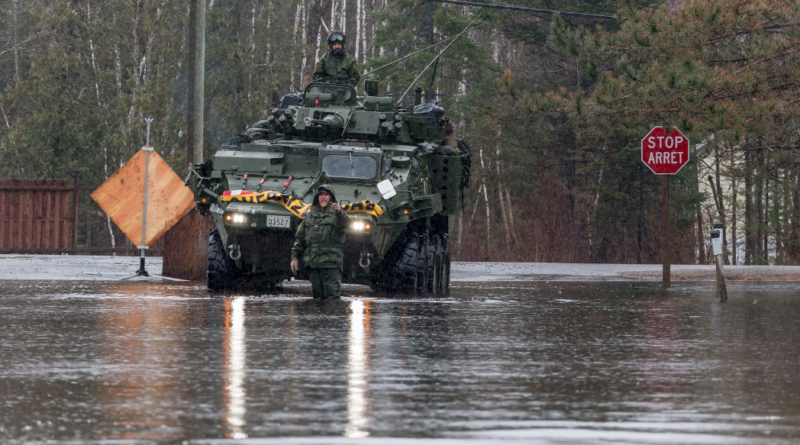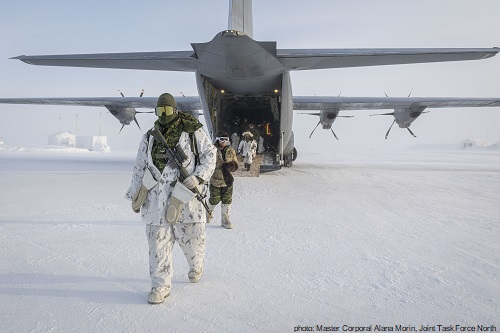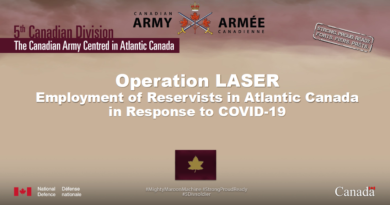Domestic Response Companies
The term Domestic Response Company (DRC) has been mentioned in recent reporting of Canadian Armed Forces preparations to assist civil authorities during the current pandemic. As there is no readily available public explanation in layperson’s language of what a DRC is, this note provides a description.
The Canadian Army Reserve trains for two different but related roles: first, to support the Regular Force in time of conflict; second, to support civil authorities in tasks other than armed support to law enforcement. This second is less well known to the general public, but Reserve units train for it annually.
The Army Reserve in Canada is formed into ten brigade groups, each approximately of 2,000 personnel. These formations are known as Canadian Brigade Groups or CBG. They are composed of about ten units and include infantry, artillery, armour, engineers, communications and logistics. For military operations, the Canadian Army may form a Battle Group (BG) to which CBG contribute and for which CBG train in tasks in a hostile military environment. The BG has been described in the RUSI(NS) Information Note “What is a Battle Group in the Canadian Army?”
Another training and operational organization is the Territorial Battalion Group (TBG) which is typically an ad hoc organization that is built for a specific domestic operation. A domestic operation is one when the military supports Canadian local authorities, such as providing assistance after a hurricane or other local disaster. A TBG is typically made up of two or more DRC plus a command and control element and a first-line support element. A TBG can be as large as 400 or 500 people, drawn from multiple units and of multiple occupations.
The DRC is the main manoeuvre (i.e., working) element of a TBG, though it can be formed by itself to meet local conditions. For example, Land Force Atlantic Area formed a DRC to assist Newfoundland authorities during the response to a massive blizzard in 2020. But what is a DRC?
The DRC is a company-strength organization usually of between 80 and 120 personnel, including a command and control headquarters element (usually with integral signals) and a support element (supply or quartermaster, transportation and maintenance resources), built up for a specific domestic operation. Civil-Military Cooperation (CIMIC) and intelligence personnel are also likely to be included depending on the actual situation and tasking. A DRC is typically organized into two or three platoons, each comprised of three 8 to 10 person sections, and with a small command element, resulting in 35 to 40 personnel per platoon.
Canadian Army Reserve TBG or DRC have typically been called out for local environmental disasters and humanitarian emergencies that do not require armed assistance. Although theoretically a “force of last resort,” military personnel have be used to fill time-sensitive gaps in Canada’s overall response capability.
Armed assistance (“aid to the civil power” or “aid to law enforcement agencies”) is considered as a last resort; Reserve elements in particular would require additional training. In any case, civilian police are generally better trained and are already authorized for scenarios requiring the use of force. Thus, even in those situations, the military is typically employed in support roles.
Under normal conditions (i.e., absent an Order-in-Council), Reserve personnel volunteer for service in domestic operations. When they volunteer for domestic operations, members of a DRC/TBG are employed on individual contracts based on the expected length of the operational requirement. The contract normally has an end date but may be extended. Reserve personnel are on ‘Class C’ service (see note below) and are considered on full time active service, with pay and benefits equivalent to a member of the Regular Force.
Note: The Canadian Forces Reserve has three types of service:
a. Class A – normal Reserve training, typically part-time, one night a week and one weekend per month;
b. Class B – full-time service in support of the Canadian Reserve Force, usually in a staff or training position, or while undergoing full-time training; and
c. Class C – full-time service equivalent to the Canadian Regular Force terms of service, such as overseas operational tours or domestic operations.



